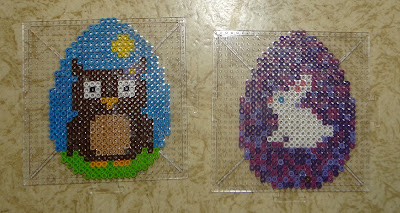This is roughly the actual size of the mini book I made.
Materials:
*Paperboard or other thin cardboard/heavy paper, such as an old cereal box, heavyweight junk mail, etc.
*Scrapbooking paper with small pattern
*All purpose adhesive
*Scissors
*Pencil
*Ruler
*Plain paper
*Paper to use for mini pages
Directions:
*Decide what size you would like your mini book to be. The first books I made were about 3.5 cm high and a little more than 2 cm wide. Draw two rectangles of the desired dimensions on your paperboard/cardboard to make the front and back covers and another, thinner rectangle to make the spine. Cut out these three pieces.
*Lay out your rectangles on your sheet of scrapbooking paper, with the thin rectangle sandwiched between the two wider rectangles, and a slight gap of space between each piece, as shown below. Glue the three pieces down.
*Cut around the rectangles, leaving about 1/4" or so of space around the edges of the cardboard and then cut off square chunks at the corners, as shown below.
*Cut slits at the top and bottom where the spine of the book is. It's kind of hard to see in the picture below, so if you can't tell exactly what's going on, check out the picture after for further guidance.
*Fold over the overhanging paper at the sides and glue down. Repeat with the pieces of paper at the top, ignoring for the time being the tabs at the spine.
*Glue down the tabs at the spine.
*Cut out rectangles of paper just slightly smaller than the size of the book covers and glue over the inside of the covers.
*Print out mini pages sized to fit in your book. The way I did this was I opened up an old document in Word or Adobe Reader and then changed the view to display two pages at once. I then took a screenshot of the two pages and pasted this into Paint. I moved one of the pages up against the other so that there was no longer a gap between them and then I selected the two pages together and pasted them into Word. I then shrunk them down to fit the book. From here if you're not too concerned about the text you're using, you could just copy and paste the two pages a bunch of times, or you could take screenshots of different pages and repeat the procedure with those pages.
*Print out enough pages to fill your book. This will vary depending on the thickness of the spine. For this one, I used five copies of the stuck together two pages. Cut out pages, leaving them stuck together in groups of two.
*Fold in half along the divide between the two pages.
*Place pages in a stack, gluing together the blank sides as you go.
*Glue along the spine and stick into the hardcover part. Now you have your book! Make a whole bunch of them!

















